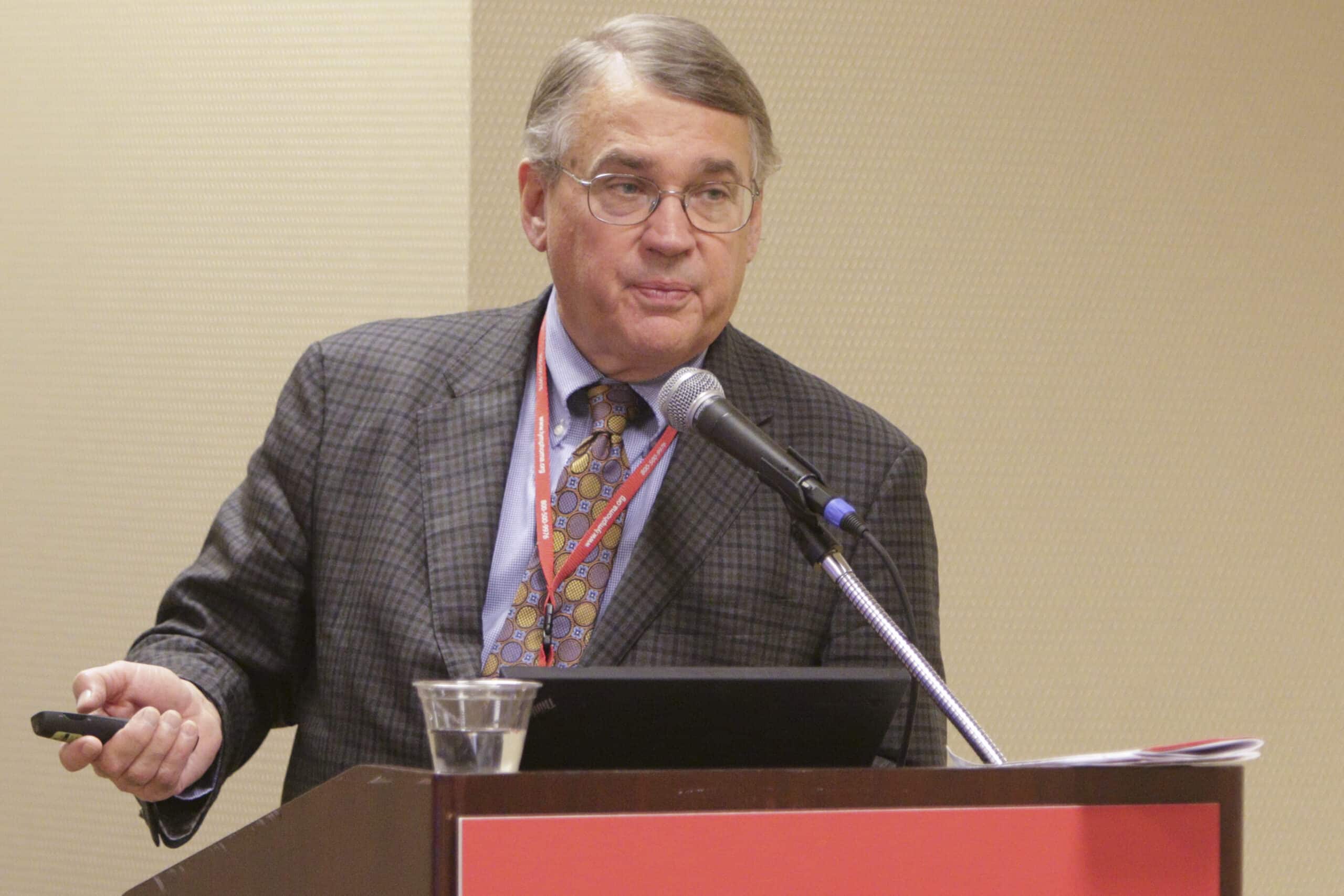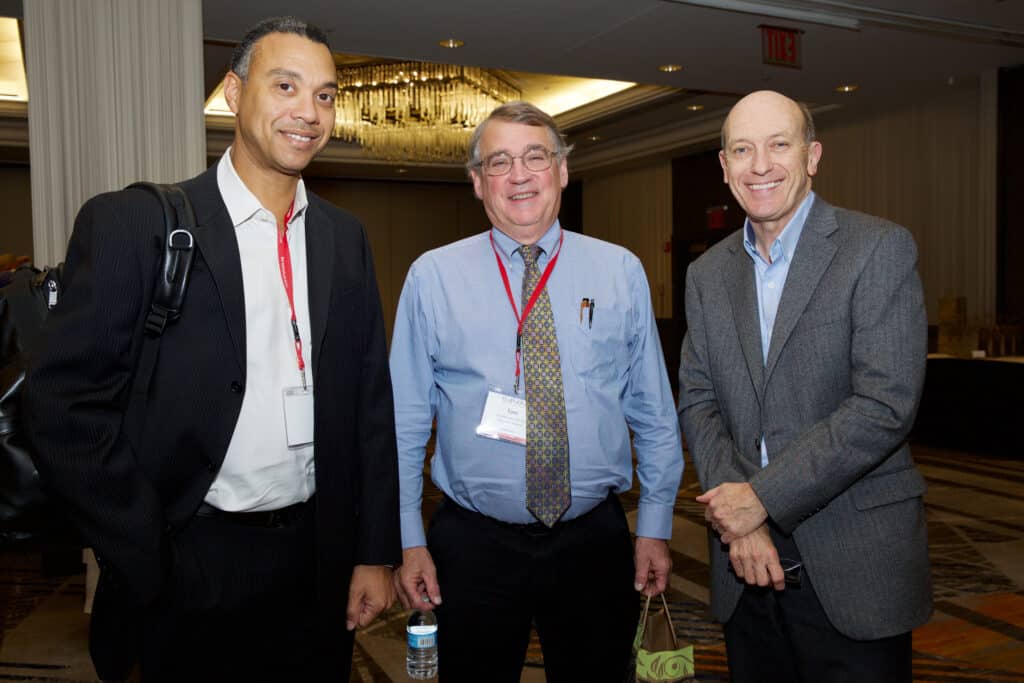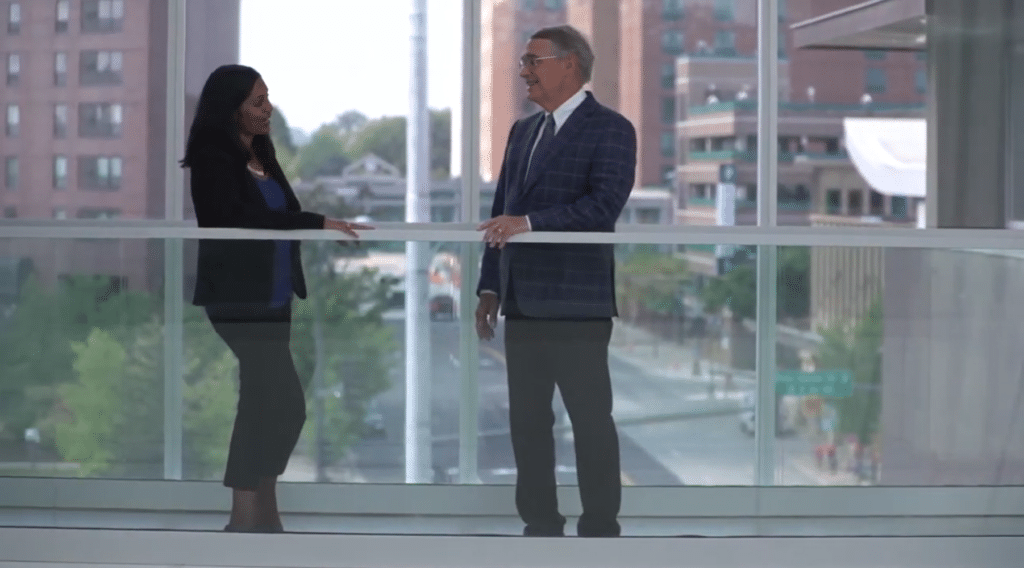Conquering the Unknowns in Lymphoma

Henry Stanley Plummer, one of the founders of the Mayo Clinic, once wrote, “What is research? It is nothing more or less than trying to find out the things that are unknown. When you are not doing that, and you think you are doing research, you are not.”
This quote has echoed throughout Dr. Thomas Habermann’s research career for decades and has helped him stay focused on the art of discovery. As the first Chair of the Mayo Clinic’s Lymphoma Group, the former Chair of the Lymphoma Research Foundation’s Scientific Advisory Board (SAB), a clinician, and prolific researcher, he brings passion and drive to every study he works on and every patient he works with.
Dr. Habermann grew up the son of a general practitioner in a small Wisconsin town, and – according to his mother – picked up his father’s drive to help people through difficult times, understand patients as people, and if possible, conquer the unknowns of the ailments that beset them.
Of all the medical challenges arrayed in front of him at the start of his own medical career, Dr. Habermann was drawn to lymphoma. He found it a worthy foe. As a disease, he says, “It’s very complex. It breaks a lot of rules.”
Investigating Lymphoma From All Angles
Dr. Habermann received his MD from Creighton University before completing his residency and fellowship at Mayo Clinic’s Rochester campus. After joining the Mayo faculty in the late 1980s, Dr. Habermann began building the Mayo Clinic’s lymphoma program with former SAB member Dr. Thomas Witzig and subsequently, Dr. Stephen Ansell, a current SAB member. “It is fascinating to think back over the last 30 years and observe what has changed and why,” Dr. Habermann says, citing new drugs, beginning with rituximab (Rituxan), treatments to reduce side effects, and advancing computer technology as a few examples. “The science has advanced exponentially and will change the field forever.”
In 1986, early on in his time as the Chair of the Mayo ClinicLymphoma Group, he launched the Lymphoma Database Project to draw out epidemiological clues and markers of the disease.
He notes that in putting the Lymphoma Project together laid the groundwork for the Molecular Epidemiology Resource (MER), which was part of a Lymphoma Specialized Program of Research Excellence (SPORE) grant that was funded for 20 years by the National Cancer Institute (NCI). This database then became the Lymphoma Epidemiology of Outcomes (LEO) database, in partnership with eight institutions. Habermann has served as the cochair of clinical cores of these grants since 2001.
Dr. Habermann has worked on numerous clinical trials that have proven central in the understanding and treatment of the disease. He contributed to the testing of rituximab, which became a key part of the treatment plan for B-cell non-Hodgkin lymphoma. His work showed that patients treated with this drug were likely to live longer. He led a major study, known as the ECOG 4494 trial, that provided strong evidence of rituximab’s effectiveness in treating the aggressive form of this lymphoma when combined with standard chemotherapy. This evidence helped convince the FDA to approve rituximab for this purpose, significantly changing the way doctors treat the disease.

He was also an author on six additional clinical trials regarding the FDA-approved indications for various blood cancer therapies including alpha recombinant interferon and 2’-deoxycoformycin (for the U.S. Intergroup hairy cell leukemia trial), yttrium-90 ibritumomab, and lenalidomide. He’s also worked on 15 other drugs, some
of which continue in development. Additionally, he’s the author on more than 30 papers in multiple clinical trials. His mentorships and other academic contributions are too numerous to mention.
As a clinical researcher, Dr. Habermann blends his patients’ personal histories into his research practice. He makes sure his patients are aware of his approach, so they can feel, to the greatest extent possible, that they are contributing to the greater good.
“I try to recognize the background of patients, who they are, what they have done in life. I have been known to put some of these things in clinical notes,” he said. “Establishing trust is so critical.” He goes on to say that once you identify with the patient and they with you, you can accomplish so much more, both clinically and in research.
Ushering in the Next Generation of Researchers

Teaching is the through-line that, for Dr. Habermann, pulls his research and clinical work into the future. In the midst of his practical work, Dr. Habermann has received six “Teacher of the Year Awards” from the Mayo Clinic Fellows Association, the “Distinguished Mayo Educator Award” in 2009, the year in which the Department of Medicine also cited his “Distinguished Contributions in Medical Education:” plus a “Lifetime Achievement for Outstanding Contributions to Medical Education” in 2012 and several other teaching awards.
After a 20-year career that included serving as Associate Dean at the Mayo Clinic, Dr. Habermann stepped down from the educational faculty of the graduate school and is now focusing on his patient practice and clinical research.
He continues to recruit and mentor researchers to study lymphoma and contribute to the Foundation’s research grant program. Dr. Habermann points with pride to these people – not just their accomplishments. He’s proud to have worked with many researchers, such as Svetomir Markovic, MD, Ph.D., who he helped bring to the Mayo Clinic. Dr. Markovic structured the Melanoma Group with the model that the Lymphoma Group implemented. Dr. Markovic also created a nanoparticle approach with rituximab, the phase 1 trial of which was reported at the American Society of Hematology (ASH) annual meeting in 2023.
Supporting the Lymphoma Research Foundation
Dr. Habermann says that he has found his work with the Lymphoma Research Foundation “extremely rewarding.” He’s worked on several of the Foundation’s projects and was elected to the Scientific Advisory Board in 2004.
A research grant from the Lymphoma Research Foundation was a turning point for him, enabling him to deepen his dedication and commitment to lymphoma research at a critical time in his life. While on medical leave himself, recovering from prostate cancer surgery, he wrote a successful proposal for the Foundation to study mantle
cell lymphoma (MCL) – a typically underserved and understudied patient population. Subsequently, the Foundation-funded several papers he worked on, including many in molecular epidemiology research.
Dr. Habermann knows from experience the value that the Lymphoma Research Foundation community provides to researchers, not to mention the funding it makes available. He is proud to contribute to grant projects, noting that, “these grants are extremely competitive.” But the value of working on one is immense: “The lists of recipients have become a who’s who of individuals in their early careers. The opportunities for further career development in junior individuals are remarkable.”
Dr. Habermann says he’s extremely proud to work with the Foundation, given its important role in advancing cures, prolonging life, and improving outcomes for lymphoma patients. He appreciates how the Foundation supports researchers in clinical research and basic science, and how it contributes to advancements in lymphoma care. I try to recognize the background
Read More Articles from Pulse
Pulse is a publication of the Lymphoma Research Foundation, providing the latest updates on the Foundation and its focus on lymphoma and chronic lymphocytic leukemia (CLL) research, awareness, and education
